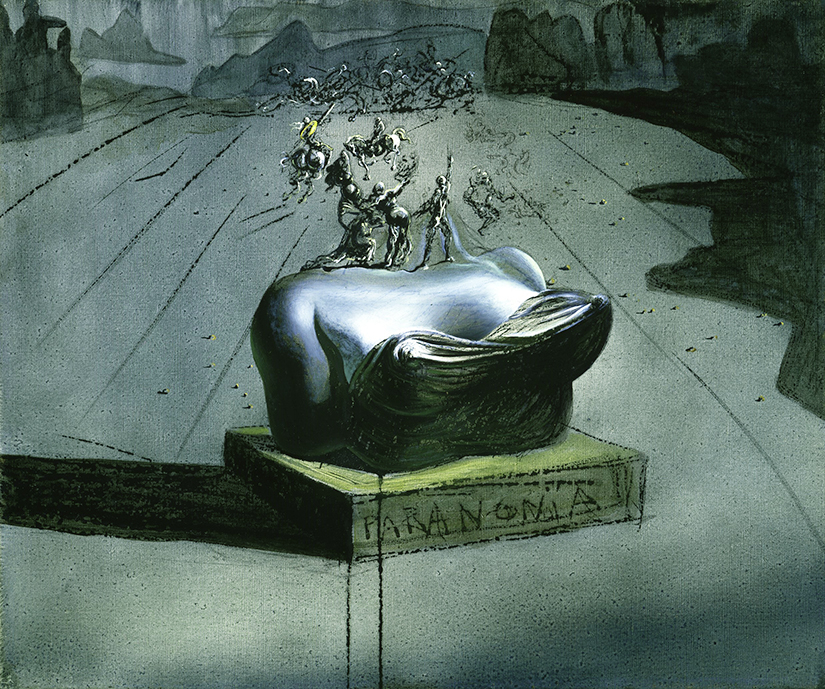Paranonia, 1935 by Salvador Dali

Paranonia belongs to a series of "anthropomorphic landscapes" of the mid- to late 1930s in which Dali explores the visual conceit of dual or multiple figurations - an image that, when viewed in a certain way, dissolves or coalesces to form a secondary or tertiary scene. In an attempt to systematize confusion and emphasize the active character of paranoiac thought, Dali challenges the viewer's visual mastery of form and opens the interpretative process to multiple and often conflicting significations. In Paranonia, the head of the woman/bust simultaneously configures a scene of horsemen in battle. When seen frontally, parallel to the viewer's plane of vision, the head and bust form a coherent gestalt, but when viewed in perspective, perpendicular to the plane of vision, the head dissolves into the battle scene and the woman exists as a trace only, an unfulfilled presence. In this reading, the battle scene metaphorically stages a struggle for recognition that is literally enacted at the level of form - the struggle, as it were, to recognize and capture the elusive, phantom object of desire.
Dali explores a similar conceit in Enchanted Beach with Three Fluid Graces. Both works have a likely source in the unfinished Adoration of the Magi by Leonardo da Vinci. Indeed, in a statement he prepared for the catalogue of his 1939 exhibition at the Julien Levy Gallery in New York, Dali specifically invoked Leonardo's name in relation to the shifting boundaries of the figure/ground relationship in his anthropomorphic landscapes. "Leonardo da Vinci," he wrote,
proved an authentic innovator of paranoiac painting by recommending to his pupils that, for inspiration, in a certain frame of mind they regard the indefinite shapes of the spots of dampness and the cracks on the wall, that they might see immediately rise into view, out of the confused and the amorphous, the precise contours of the visceral tumtdt of an imaginary equestrian battle. Sigmund Freud, in analysing the famous invisible vulture (which appears in that strangest of all pictures, Leonardo's Virgin of the Rocks) involuntarily laid the epistemological and philosophical cornerstone of the majestic edifice of imminent "paranoiacpainting."























